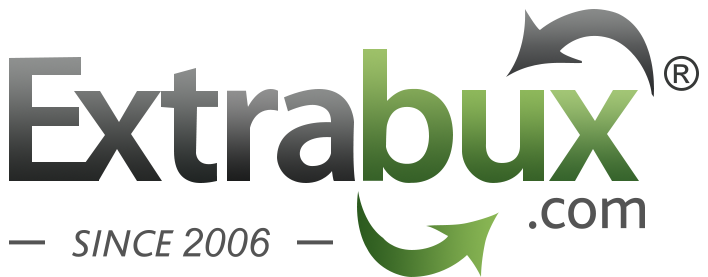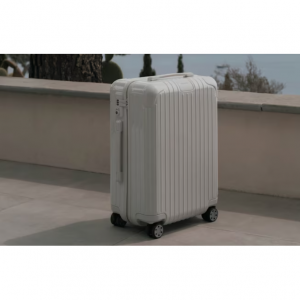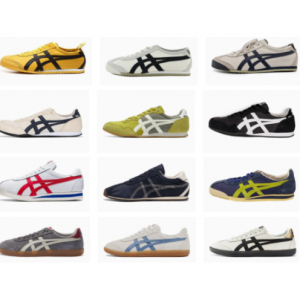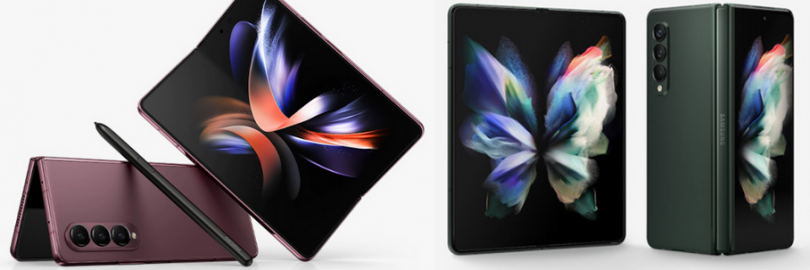
Samsung Galaxy Z Fold 4 vs. Fold 3 Review: Is It Worth the Upgrade?
Samsung is surely the market leader in foldable devices right now, with its Fold handsets being released on an annual basis to little competition from other major manufacturers. The new released Samsung Galaxy Z Fold 4 may not look like a massive upgrade over the Galaxy Z Fold 3, but there are still some pretty significant differences. So do you go with the shiny new Galaxy Z Fold 4? Or do you pick up the older, but still impressive Galaxy Z Fold 3? Is it worth upgrading from a Galaxy Z Fold 3 to a Galaxy Z Fold 4? To help take some of the hard work of deciding off of your back, I will first list their specifications, and will then compare their designs, displays, Processor, camera, battery life and software. Let's start now!
Where to buy Galaxy Z Fold 4 and Z Fold 3?
| #1 Samsung Galaxy Z Fold 4
Samsung: from $1799.99 (up to 2% cashback)
Bestbuy: $1799.99 (up to 0.5% cashback)
If you want to buy Samsung Galaxy Z Fold 4, don't forget to sign up at Extrabux!(What is Extrabux), then you can enjoy up to 4% cashback on your purchase from Extrabux! Sign-Up Bonus: Free to join it & get a $20 welcome bonus!
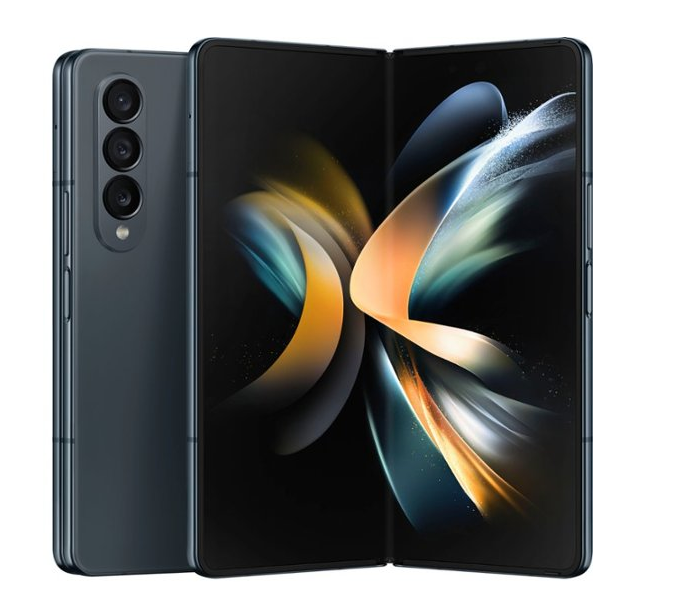
| PROS | CONS |
| More durable, water resistant design | Still very pricey |
| New taskbar improves multitasking | Under-display camera just 4MP |
| Wider front screen | Crease still visible |
| Brighter main display | |
| Upgraded 50MP camera | |
| Hidden selfie camera in the big screen |
| #2 Samsung Galaxy Z Fold 3
Samsung: from $1799.99 (up to 2% cashback)
Bestbuy: $1499.99 (up to 0.5% cashback)

| PROS | CONS |
Excellent screens in and out | Cameras could be better |
| Both displays are 120 Hz | Folded, the phone is awkwardly thick and tall |
| Empowering multitasking features | Still has visible crease |
| Smooth performance | |
| S Pen support | |
| IPX8 Water resistant |
Galaxy Z Fold 4 vs. Z Fold 3: Specs
The best way to discover the differences between Samsung Galaxy Z Fold 4 and Fold 3 is to compare their specifications. That is why, before analyzing each difference in more depth, here I leave you a comparative table so that you can write down some ideas.
| Samsung Galaxy Z Fold 4 | Samsung Galaxy Z Fold 3 | |
| Dimensions (folded) | 67.1 wide x 155.1 tall x 15.8mm thin | 67.1 wide x 158.2 tall x 16.0mm thin |
| Dimensions (unfolded) | 130.1 wide x 155.1 tall x 6.3mm thin | 128.1 wide x 158.2 tall x 6.4mm thin |
| Weight | 263 grams | 271 grams |
| Colors | Graygreen, Phantom Black, Beige, Burgundy (Samsung.com exclusive) | Phantom Black, Phantom Green, Phantom Silver |
| Inner Display | 7.6-inch Dynamic AMOLED 2x, LTPO (1-120Hz), 2176 x 1812, 21.6:18 | 7.6 inches, 22.5:18, 2208x1768 (374 ppi) resolution, Dynamic AMOLED 2X, 120Hz refresh rate |
| Cover Display | 6.2-inch Dynamic AMOLED 2x, LTPO (48-120Hz), 2316 x 904, 23.1:9 | 6.2 inches, 25:9, 2268x832 (387 PPI) resolution, Super AMOLED, 120Hz refresh rate |
| Processor | Qualcomm Snapdragon 8+ Gen 1 | Qualcomm Snapdragon 888 |
| RAM | 12GB | 12GB |
| Storage | 256GB, 512GB, 1TB | 256GB, 512GB |
| Software | Android 12L, OneUI 4.1.1 | One UI 4.1 over Android 12 |
| Rear Camera 1 | 50MP, ƒ/1.8, 1.0μm, 85-degree FoV (main camera) | 12MP, ƒ/1.8, 1.8μm (main camera) |
| Rear Camera 2 | 12MP, ƒ/2.2, 1.12μm, 123-degree FoV (ultra-wide) | 2MP, ƒ/2.2, 1.12μm (ultra-wide) |
| Rear Camera 3 | 10MP, ƒ/2.4, 1.10μm, 3x optical zoom | 12MP, ƒ/2.4, 1.0μm, 2x optical zoom (telephoto) |
| Inside Camera | 4MP, ƒ/1.8, 2.0μm, 80-degree FoV | 4MP, ƒ/1.8, 2.0μm |
| Cover Camera | 10MP, ƒ/2.2, 1.22μm, 80-degree FoV | 10MP, ƒ/2.2, 1.22μm |
| Video | HDR, 8K video recording at 24 fps, 1080p and 4K video recording at 30 fps and 60 fps, slow motion 1080p video support at 240 fps, super slow-mo 720p video support at 960 fps, hyperlapse 4K video support at 30fps | HDR, 1080p and 4K video recording at 30 fps and 60 fps, slow motion 1080p video support at 240 fps, super slow-mo 720p video support at 960 fps, hyperlapse 4K video support at 30fps |
| Battery Capacity | 4,400mAh (dual 2,200mAh batteries) | 4,400mAh |
| Charging | 25W Fast Charging, 10W Wireless Charging, 4.5W Reverse Wireless Charging | 25W Fast Charging, 10W Wireless Charging, 4.5W Reverse Wireless Charging |
| Connectivity | 5G, LTE, NFC, Bluetooth 5.2, Wi-Fi, USB Type-C | 5G, LTE, NFC, Bluetooth 5.2, Wi-Fi, USB Type-C |
| Biometrics | Fingerprint scanner in power button | Fingerprint scanner in power button |
| Water and dust protection | IPX8 rating | IPX8 rating |
| Wireless | Wi-fi 6, Bluetooth 5.2 | Wi-fi 6, Bluetooth 5.0 |
| S Pen support? | S Pen Fold Edition | S Pen Fold Edition |
Galaxy Z Fold 4 vs. Z Fold 3: Full Comparison
Colours and Pricing
In the U.S., the Galaxy Z Fold 4 costs the same at launch as the Galaxy Z Fold 3 did: $1,799. But you can easily find the discount on Galaxy Z Fold 3 now. The Galaxy Z Fold 3, upon release, was available in ‘Phantom Black,’ ‘Phantom Green’ and ‘Phantom Silver’ colourways, whereas the new Galaxy Z Fold 4 is available in ‘Graygreen,’ Phantom Black,’ ‘Beige’ and the Samsung website-exclusive ‘Burgundy’ colourways.
Design
The Samsung Galaxy Z Fold 4 and Fold 3 do look very similar. The design really did not change much, as far as looks are concerned, but the dimensions are different. The Galaxy Z Fold 4 is a bit shorter, and a bit wider. It’s also slightly lighter than its predecessor. It weighs 263 grams, while the Galaxy Z Fold 3 weighs 271 grams. Both devices are IPX8 certified for water resistance, and both utilize the Armor aluminum frame.
However, The new Samsung Galaxy Z Fold 4 wins on toughness, courtesy of Gorilla Glass Victus+ to the front and back, which is supposed to be 20% more scratch-resistant, while the Galaxy Z Fold 3 has plain old Gorilla Glass Victus, covering the same surfaces. Both foldables are compatible with the same S Pen Fold Edition stylus, though neither finds the space to store for such a tool in their sizeable bodies.
Display
The Z Fold 4 has a Dynamic AMOLED panel on the front with a 2316 x 904 pixel resolution and an adaptive refresh rate between 48Hz and 120Hz, while the internal display is a Dynamic AMOLED panel with Ultra Thin Glass, a 2176 x 1812 pixel resolution and a 1-120Hz adaptive refresh rate. The Z Fold 3 has a 6.23-inch cover display offering a 2268 x 832 pixel resolution, while the inside display is 7.6-inches with a resolution of 2208 x 1768 pixels. Both screens support a 120Hz refresh rate.
Both displays on both phones are technically the same size. The difference comes in the aspect ratio however. The Galaxy Z Fold 4 sports a 3mm wider main display, which makes for a supposedly more useful canvas. The likes of Outlook, Office, Teams, Facebook, and Google Meet have been optimized for the Fold 4’s larger screen, with additional UI elements cropping in certain cases. The other big update for the Z Fold 4's screens is brightness. Samsung claims it's now capable of 1,000 nits max brightness, which is substantially higher than the 422 nits we measured for the Z Fold 3.
Processor
Another key difference that you’ll find between the Samsung Galaxy Z Fold 4 and Fold 3 is the processor. Qualcomm's Snapdragon 8+ Gen 1 chip, the best of the best from the American chip company as of writing, powers the new Fold 4. It has a more robust 3.19 GHz Cortex-X2 core for high performance aided by three Cortex-A710 cores running at 2.75GHz and finally, four Cortex-A510 cores for power efficiency. We’ve already seen it in action on the Asus ROG Phone 6 Pro and the OnePlus 10T, and its performance has blown us away. In short, the Z Fold 4 has become faster and should handle multitasking as well as mobile games even better. Of course, it not means the Z Fold 3’s Snapdragon 888 processor is slow.
In addition, the Snapdragon 8+ Gen 1 is also a more power-efficient chipset than the Snapdragon 888, so while the battery size in the Fold 4 and Fold 3 are the same, you can expect slightly better battery life in the Fold 4.When the battery gets low, you'll find comfort in the Fold 4's ability to charge faster than the Fold 3. Samsung says 30 minutes will charge 50% of the Fold 4's battery, while that same time frame would only deliver a 35% charge to the Fold 3.
Cameras
The camera is where the main upgrade is with the Fold 4. Samsung upgraded the smartphone’s main camera from 12-megapixel (wide, f/1.8) to 50-megapixel (wide, f/1.8). With the new 50MP lens, expect better images with the increased pixel size. The lens is 23% bigger and, as a result, will also prove beneficial in low lighting conditions where you need to capture as much light as possible. Another vital addition courtesy of the new camera lens is the ability to shoot 8K video at 24fps, unlike the Z Fold 3, which topped out at 4K.
The Ultra-wide camera on the Z Fold 4 is identical to the Z fold 3, coming in at 12-megapixel (f/2.2). The telephoto camera appears to have experienced a downgrade in megapixel terms, going from 12-megapixel (f/2.4) on the Z Fold 3 to 10-megapixel (f/2.4) on the Z Fold 4. However, with the new telephoto lens, you get 3x optical zoom, as compared to the Z Fold 3’s 2x optical zoom.
Both the Z Fold 3 and 4 use identical front-facing cameras.Those are a 10MP sensor on the cover display, and a 4MP under-display camera on the inside. But the inside front camera of Z Fold 4 is improved, though it retains the 4-megapixel resolution.
Storage
Both Samsung Galaxy Z Fold 4 and Fold 3 give you an ample 12GB of RAM, the Z Fold 4 also supplies a 1TB storage option above the shared 256GB and 512GB offerings. The connectivity has remained the same: There is 5G, LTE, Wi-Fi 6E as well as Bluetooth 5.2.
Software
The
Galaxy Z Fold 3 was launched with Android 11 and later received the
OneUI 4.1 (Android 12) update. The Galaxy Z Fold4 runs OneUI 4.1.1,
based on Android 12L. The Android 12L offers a much more polished UI for
larger screens including foldables and tablets. Further, it comes with a
better multi-tasking and app experience for larger screens. So the
Galaxy Z Fold 4 should offer usability improvements over its
predecessor.
Battery Life
Samsung Galaxy Z Fold 4 packs a 4400mAh battery, same like the Galaxy Z Fold 3 it also supports 25W charging speed but the wireless charging speed has gone up from 10W on the Galaxy Z Fold 3 to 15W for the new Fold this year.
Summary: Main Differences Between the Samsung Galaxy Z Fold 4 and Galaxy Z Fold 3
We have already analyzed each section of these two foldable phones in depth, but how about we summarize the main differences in a list of points? It is a simple way to consult it, so here we leave the information:
1. The Galaxy Z Fold 4 is slightly thinner and lighter, although it is almost unnoticeable.
2. The Galaxy Z Fold 4 has a 1TB version of internal storage.
3. The main screen aspect ratio of the Galaxy Z Fold 4 is slightly wider, which should make it more useful in more scenarios
4. The Galaxy Z Fold 4 uses Gorilla Glass Victus+, while the Z Fold 3 uses the standard Victus.
5. The Galaxy Z Fold 4 has a more powerful processor, the Snapdragon 8+ Gen 1.
6. The main camera goes up from 12 MP (Galaxy Z Fold 3) to 50 MP on the Galaxy Z Fold 4.
7. The telephoto lens of the Galaxy Z Fold 4 has 3x optical zoom, in the previous one it was 2x.
8. There is an upgrade in the wireless charging speed; the Galaxy Z Fold 4 supports 15W wireless charging compared to 10W on the Galaxy Z Fold 3.
9. The Galaxy Z Fold 4's software adds Taskbar for enhanced multi-tasking potential
Is it worth upgrading from a Galaxy Z Fold 3 to a Galaxy Z Fold 4?
With no doubt, both Samsung Galaxy Z Fold 3 and Fold 4 are incredible foldable phones that changed the way you think about how phones work and operate. Compared to Samsung Galaxy Z Fold 3, the Samsung Galaxy Z Fold 4 not only improves the durability, but also gets a performance boost though, an extra stroage options, plus battery and camera improvements. What's more, with a more discreet hinge and less noticeable crease, it’ll get one step closer to that futuristic flip phone ideal. But at the same time we have to say that these upgrades don’t convince us that an upgrade from last year’s model is necessary. Moreover, the Fold 4 doesn’t address one of the biggest issues with the Fold 3, which is battery life.
So in my opion, if you already own a Samsung Galaxy Z Fold 3, it's not worth the jump to the Galaxy Z Fold 4. Yes, there are some pretty cool new features, but the jump isn't big enough to spend $1,800 on the new Z Fold 4. But, on the other hand, if you’re someone who loves the latest and greatest tech and you can get a decent trade-in credit, go for it. You will get not only a better version of the Fold idea, but the best foldable smartphone on the market.
On the contrary, if you were thinking of buying your first Galaxy Z Fold, then it is worth going directly to the newer model. Both devices have a similar starting price, so it is better to go for the latter at once. But pay attention, the Galaxy Z Fold 3 can be obtained at a lower price on some occasions due to its time on the market.
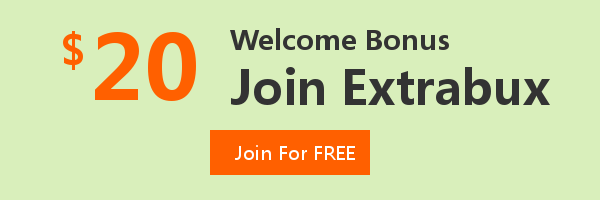
Extrabux is an international cashback shopping site, offering up to 30% cashback from 10,000+ Stores!
Microsoft, Dell, HP, Lenovo, Alienware, Acer, Asus, Samsung, BestBuy, Walmart, Staples, Overstock, QVC, New Egg, Office Depot, eBay, etc.
Join to get $20 welcome bonus now! (How does Welcome Bonus work?)
Recommendation
-

Apple Watch Ultra 2 Real vs. Fake Guide 2025: How To Tell Original From Fake?
-

Microsoft 365 A1 vs. A3 vs. A5: Full Comparison & Verdict 2025
-

Is Turkish Airlines Good for International Flights?
-

Top & Best 12 Sneaker Apps/Websites for Raffles, Releases & Restocks in 2025
-

7 Best Gift Card Exchange Sites - Buy, Sell and Trade Discount Gift Card Safely and Instanly!
